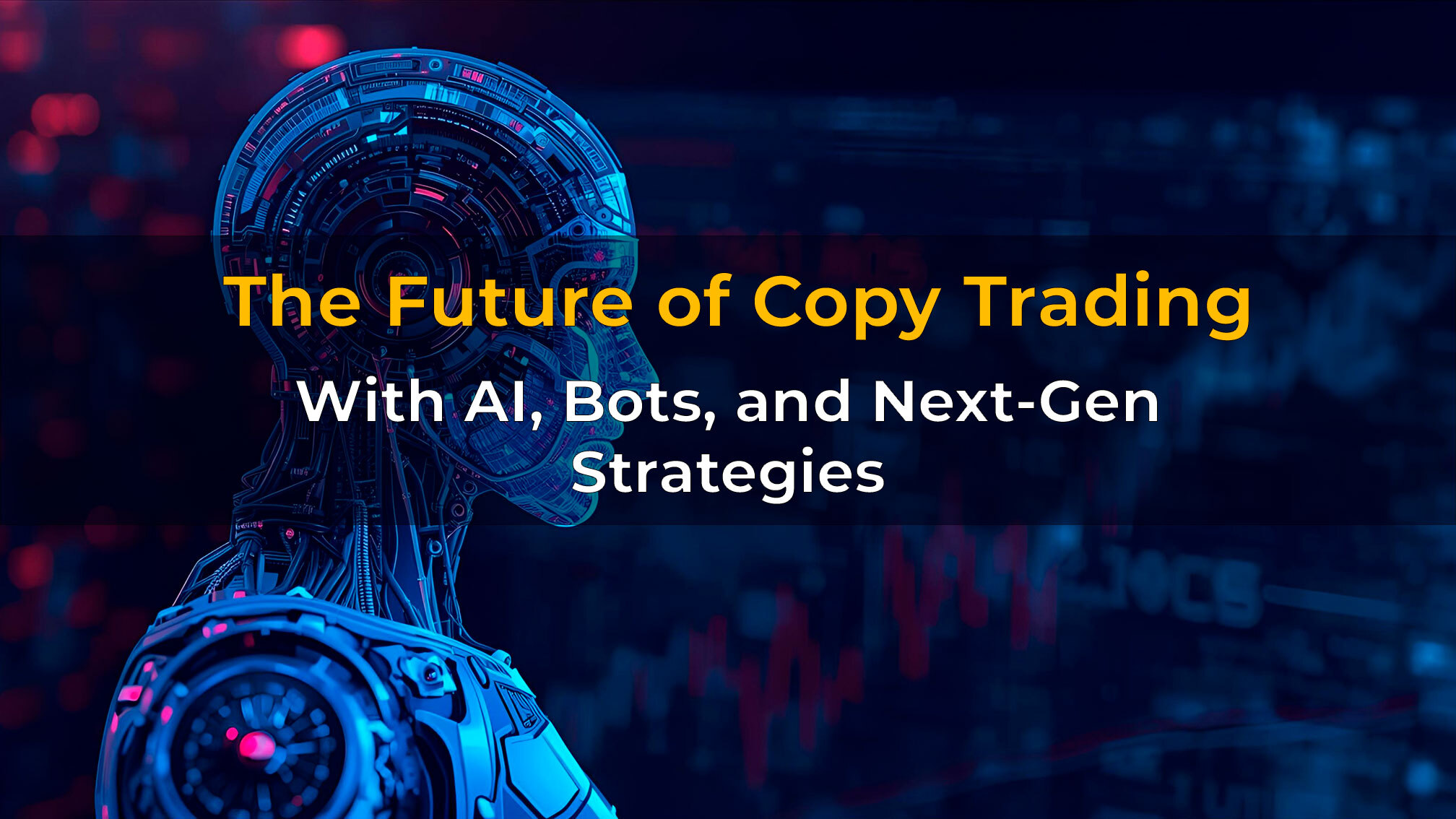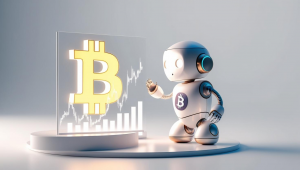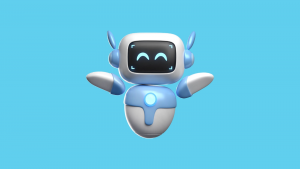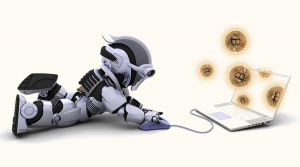
The Future of Copy Trading with AI, Bots, and Next-Gen Strategies
08 августа 2025
8 views
The Future of Copy Trading with AI, Bots, and Next-Gen Strategies
Copy Trading has revolutionized retail investing by democratizing access to expert strategies. By linking followers’ accounts to experienced traders, it eliminated the need for continuous self-study and active market monitoring. However, the first generation of Copy Trading was fundamentally limited by human psychology and capacity: prone to emotional decision-making, limited by reaction time, and subject to fatigue.
Today, we stand at the threshold of the next great evolution. The convergence of Artificial Intelligence (AI), sophisticated trading bots, and machine learning (ML) is transforming this social investing model into a powerhouse of automated investing. This shift moves the focus from passively replicating a single human trader’s actions to building dynamic, intelligent portfolios driven by data, algorithms, and next-gen strategies. The future of trading is not just about copying; it’s about autonomous, strategic intelligence.

From Manual to Machine — The Evolution of Copy Trading
To understand where AI Copy Trading is headed, we must first recognize its journey. Initially, Copy Trading was a purely manual process for the follower, selecting a trader based on historical performance charts.
The early stages involved:
- Manual Selection: Followers spent hours analyzing human performance metrics (drawdown, profit factor, win rate).
- Human-to-Human Correlation: Success depended entirely on the chosen master trader’s skill, consistency, and emotional control.
- Static Risk: The follower’s risk management was often a static, fixed allocation, vulnerable to abrupt changes in the master trader’s strategy.
The shift toward automated investing began with simple automated signals and basic scripting. Now, AI and machine learning are replacing reliance on individual human judgment with robust, data-driven systems. This transition is critical because, unlike humans, machines can process billions of data points, operate 24/7 without emotion, and adapt their strategies instantly to changing market conditions. This forms the foundation of the modern automated copy trading environment.
The Role of Artificial Intelligence in Copy Trading
Artificial Intelligence (AI) is the primary disruptive force reshaping the Copy Trading landscape. It moves the discipline beyond simple replication toward proactive, intelligent portfolio management.
What AI Brings to the Table
AI, particularly through machine learning, processes vast, unstructured data sets that are invisible to the human eye. This includes not just price and volume, but also macroeconomic indicators, news sentiment, satellite imagery, and social media data. AI excels at:
- Pattern Recognition: Identifying complex, non-linear relationships and subtle anomalies in market data that precede major moves.
- Predictive Modeling: Generating high-probability forecasts for asset price movements with greater accuracy than traditional statistical models.
- Adaptive Learning: Continuously updating and refining its own algorithms based on new data and execution performance, ensuring the strategy never becomes obsolete.
How AI Changes the Copying Model
In the classic model, followers copied a person. In the new model, followers are often copying an AI-driven strategy or an AI-optimized portfolio.
Instead of selecting «John Doe, a veteran Forex trader,» a user might select a strategy labeled «Adaptive Volatility Arbitrage (Powered by SmartT AI).» The follower is no longer tied to one person’s capacity; they are connected to a dynamic algorithm that constantly searches for the optimal trade execution and risk management across potentially hundreds of markets simultaneously.
Benefits of AI-Driven Copy Trading
The advantages of integrating AI into the Copy Trading process are profound, directly addressing the limitations of human-led trading:
- Elimination of Emotional Bias: AI and ML operate purely on data and probability, immune to fear, greed, or overconfidence—the biggest destroyers of long-term trading capital.
- Superior Risk Management: AI models can instantly calculate position sizing based on real-time market volatility, optimizing for the best risk-adjusted returns (e.g., maximizing the Sharpe Ratio).
- Enhanced Diversification: AI can actively manage an AI-optimized portfolio composed of multiple non-correlated strategies across various assets, ensuring that one losing trade or strategy does not tank the entire account.
- 24/7 Market Coverage: Markets never sleep, and neither do AI algorithms, allowing strategies like scalping or arbitrage to be executed optimally regardless of the follower’s or master trader’s time zone.
The Rise of Trading Bots — Automation Beyond Human Limits
While AI provides the intelligence, trading bots (or algorithmic trading systems) provide the muscle. Bots are the software programs designed to execute trades based on predefined rules or, increasingly, based on the sophisticated signals generated by AI/ML models.

What Are Copy Trading Bots?
In the context of Copy Trading, a bot is often the automated execution engine tied to a sophisticated algorithmic strategy. These bots are the digital hands that place, manage, and close orders instantly and precisely. They range from simple trading bots executing basic technical analysis rules to complex, proprietary systems utilizing machine learning for dynamic decision-making.
Key Advantages
The inherent advantages of using trading bots translate directly to superior performance and reduced operational risk for the follower:
- Speed and Precision: Bots can execute trades in milliseconds, capturing fleeting opportunities like arbitrage or rapid price swings that are impossible for humans to exploit.
- Backtesting and Optimization: A core strength of bots is the ability to rigorously test a strategy across decades of historical data before risking any live capital. This rigorous testing, powered by machine learning, is vital for ensuring robust, long-term performance.
- Disciplined Execution: Bots guarantee that the strategy is followed exactly as defined, eliminating the temptation to deviate from the plan during periods of stress or excitement. This level of discipline is crucial for consistent automated investing.
Why Bots Are Becoming Essential
The modern financial market is defined by speed and information density. Without automation, retail traders and passive followers are at a massive disadvantage against institutional players and hedge funds. Trading bots level the playing field, making precise, high-speed execution accessible to the average investor participating in automated copy trading. They are essential for leveraging the intelligence provided by AI, transforming predictions into profitable action.
Next-Gen Strategies — The New Frontier of Copy Trading
The combination of AI and bots has unlocked a new generation of sophisticated, complex strategies that were previously reserved for institutional trading desks. These next-gen strategies are now the key offerings in the most advanced AI Copy Trading platforms.
Algorithmic Arbitrage
This strategy involves simultaneously buying and selling the same or similar assets across different markets or exchanges to profit from tiny, temporary price discrepancies. Algorithmic arbitrage requires extreme speed and precision, making it an exclusive domain of trading bots. AI models can identify these micro-opportunities faster than any human and execute the trades before the window closes, providing followers with small but highly consistent returns.
Sentiment-Based Trading
AI models are highly adept at scanning and processing colossal amounts of text data—news headlines, social media chatter, economic reports, and forum discussions. Sentiment-based trading extracts actionable signals from this data, gauging the collective mood toward an asset. For instance, if AI detects a sudden spike in negative institutional commentary on a currency pair, it can trigger an automated short trade, long before the human market reaction plays out.
High-Frequency Trading (HFT)
While true HFT involving co-location is difficult for retail brokers, simplified, accessible versions are making their way into Copy Trading via proprietary bots. These strategies involve executing a massive number of orders at high speed, holding positions for seconds or less. They are pure automation plays, relying on speed, low latency, and machine learning to find microscopic edges in order flow and liquidity. For the follower, this translates into a unique, highly active diversification tool.
Adaptive Strategies
This represents the pinnacle of AI Copy Trading. Unlike fixed rules (e.g., “buy when the moving average crosses”), adaptive strategies use ML to dynamically change their entire model based on the prevailing market regime. The AI automatically switches the bot from a «trend-following» mode during high volatility to a «mean-reversion» mode during range-bound conditions. This dramatically improves consistency and minimizes the long drawdowns often associated with fixed, human-led strategies.
AI-Optimized Portfolios
The future is shifting from copying a single strategy to copying an entire, AI-optimized portfolio. These portfolios are not static; the AI engine, sometimes referred to as a «SmartT» or «Auto-Rebalancing» tool, continuously monitors the risk correlation between the underlying traders/bots. If two copied assets suddenly become too correlated, the AI automatically reduces the allocation to one of them, maintaining optimal diversification and systematic risk management.
Benefits and Trade-Offs of AI and Bots in Copy Trading
The integration of AI and trading bots presents a compelling case for the evolution of automated investing, but it’s crucial to maintain a balanced perspective on the associated trade-offs.

Benefits
- Reduced Barrier to Entry: Sophisticated, institution-grade strategies are now accessible to the average retail investor through easy-to-use platforms.
- Increased Consistency and Discipline: The removal of human emotion leads to fewer catastrophic errors and more reliable long-term execution.
- Superior Risk Management: AI-driven position sizing and dynamic stop-loss placement offer a higher grade of capital protection than manual systems.
- Higher Capacity for Diversification: Bots allow users to seamlessly manage diverse portfolios across asset classes, strategies, and timeframes simultaneously.
Trade-Offs and Risks
- Over-Optimization Risk: Bots, if not properly developed, can be too perfectly tuned to past data, performing excellently in backtests but failing miserably in unpredictable live markets. This is why continuous machine learning is essential.
- Black Box Problem: For some proprietary strategies, the user cannot easily understand why the AI made a specific decision. Followers must place trust in the verified track record and the platform’s due diligence.
- Dependency on Technology: The system relies completely on technological stability (server speed, connectivity). Technical failures, though rare, can lead to trade execution errors.
- Market Regime Shifts: While adaptive strategies mitigate this, major, unprecedented global events (e.g., a «Black Swan» event) can temporarily render even complex AI models ineffective until the algorithms adapt to the new reality.
Trends Shaping the Future of Copy Trading
The trajectory of AI Copy Trading is being defined by several key technological and regulatory trends:
- Explainable AI (XAI): A growing trend where AI models are developed to provide more transparency, allowing users to understand the key factors driving the trading decisions, mitigating the «Black Box» risk.
- Decentralized Finance (DeFi) Integration: Copy Trading platforms are beginning to integrate with DeFi protocols, allowing bots to execute decentralized trading and yield generation strategies on blockchains.
- Predictive Risk Modeling: Moving beyond static stop-losses, next-gen systems use ML to forecast future volatility and adjust risk exposure before a major price move occurs.
- Personalized Investing Profiles: AI will soon not just recommend traders but actively generate and manage custom algorithmic strategies unique to a user’s precise goals, lifestyle, and stress tolerance. This is the ultimate personalization of automated investing.
The Human Element — AI as a Partner, Not a Replacement
While the role of AI and trading bots is rapidly expanding, the human element remains vital. The future of trading does not envision a world without human oversight.
The human role is shifting from that of an active trader to that of a strategic portfolio architect. Humans are responsible for:
- Ethical Oversight and Strategy Goal Setting: Defining the boundaries, ethical parameters, and long-term financial goals that the AI must operate within.
- Qualitative Interpretation: Interpreting unprecedented global events and market narratives that raw data alone cannot fully capture.
- Platform and Trader Vetting: Conducting due diligence on the platforms and the algorithmic strategies offered, analyzing risk management protocols, and selecting the optimal blend of human and machine-led strategies.
AI is not replacing the investor; it is replacing the investor’s tactical labor. It allows the human to focus on strategy, capital allocation, and macro risk management, thereby enhancing the overall trading discipline and potential for long-term profit.
Conclusion — Smarter, Faster, More Connected
The integration of AI, trading bots, and next-gen strategies marks the inevitable evolution of Copy Trading into a sophisticated, scalable form of automated investing. By removing human emotion, increasing execution speed, and providing unparalleled analytical depth, these technologies promise greater consistency and smarter risk management for every retail investor. The next era of AI Copy Trading will be characterized by highly intelligent, dynamically managed portfolios that are smarter, faster, and more connected to the true drivers of market movement.




